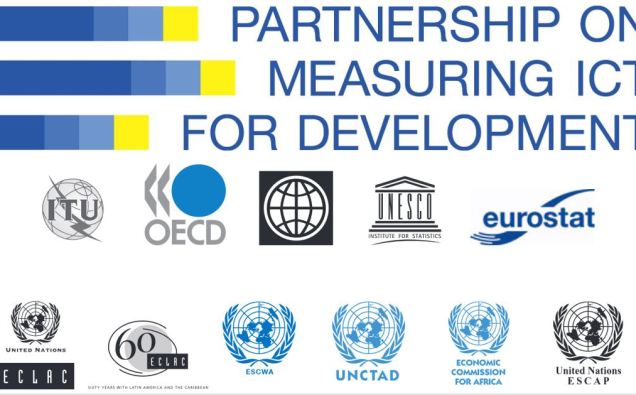
ABSTRACT
Measurement is an important aspect of the debate about the information society and the role it plays in economic and social development . This publication uses information and communication technology statistics to provide a view of the information society in both developed and developing economies . Measuring information and communication technology (ICT) for development was a major concern for the two World Summits on the Information Society, held in Geneva in 2003 and Tunis in 2005 . The Geneva Plan of Action highlighted the development of “…international performance evaluation and benchmarking… through comparable statistical indicators and research results…” and emphasized measurement of the magnitude of the national and international ‘digital divide’, growth of the ICT sector and the impacts of ICT use on women and girls . Countries were asked to develop tools that would enable the provision of statistical information on the information society, with priority for “coherent and internationally comparable indicator systems” . The Partnership on Measuring ICT for Development was launched in June 2004, following the first World Summit on the Information Society,and members have worked collaboratively with statistical agencies and policymakers to establish an agreed set of statistical indicators (the ‘core list’) for measuring ICT . They also provide statistical agencies with technical assistance that enables collection of the statistics that underlie the core indicators . The main objective of these efforts is the production of internationally comparable and reliable ICT statistics . The 2005 Tunis phase reiterated the importance of measuring the digital divide and called for the tracking of progress in the use of ICT to achieve agreed international goals . The efforts of the Partnership in developing a core list of ICT indicators and promoting statistical capacity- building were noted and the international community was invited to assist in strengthening the statistical capacity of developing economies . As well as presenting available statistics, this publication assesses progress in measuring the information society by exploring the data gaps that remain . Whilst availability of the core indicators for developed economies is good – and improving for some developing economies – for most of the core indicators, data availability in the developing world is limited . In addition, more work is required by most countries that already collect core indicators to better align their statistical programs with the requirements of the core indicators in order to improve the international comparability of ICT statistics . The Partnership’s efforts in capacity-building and awareness raising, and the endorsement in 2007 of the core list of ICT indicators by the UN Statistical Commission, should lead to improvements in the number of countries that collect core ICT indicators and the comparability of the indicators.
The Global Information Society: a Statistical View was prepared by a consultant, Ms Sheridan Roberts, with substantive input from members of the Partnership on Measuring ICT for Development… The publication was funded by the International Development Research Centre of Canada (IDRC) and the European Commission, through the @LIS project. Its production was coordinated by Martin Hilbert of the United Nations Regional Commission for Latin America and the Caribbean (UN ECLAC).















